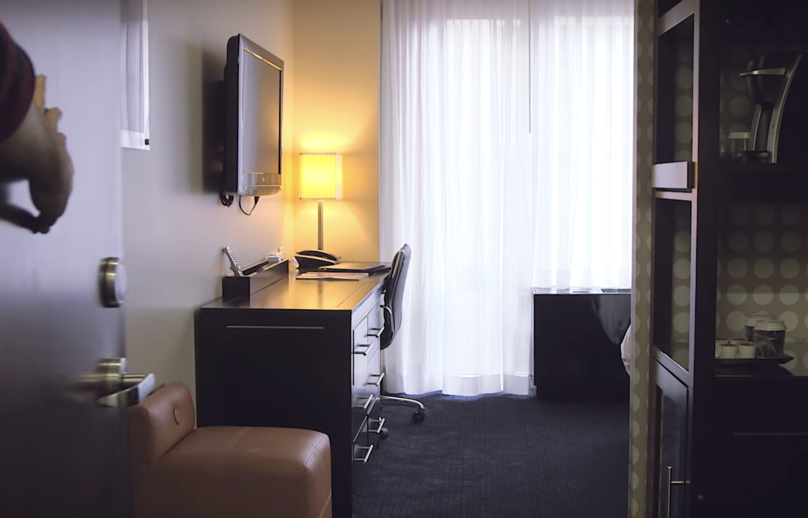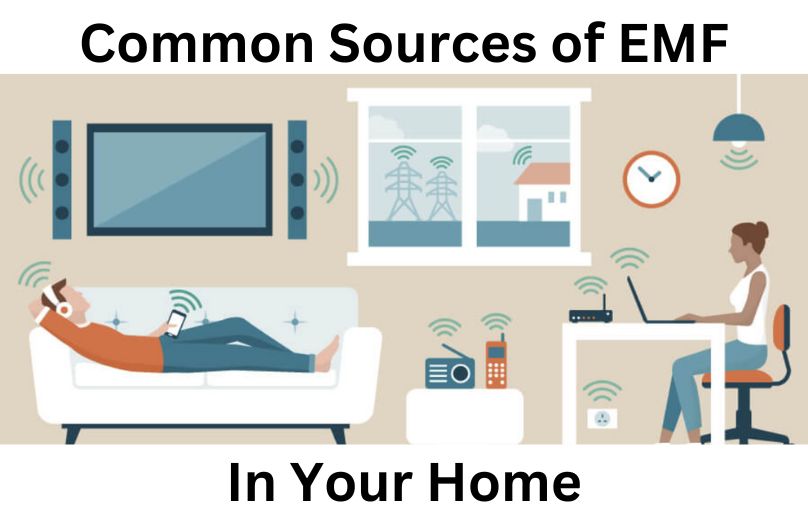After years of reading Building Biology research and measuring EMF levels in my home, friends’ homes, and neighbors’ houses, I’ve discovered that creating a healthy electromagnetic environment goes way beyond what most people think about EMF safety.
I can still remember my surprise when I first got my EMF meter and found that my “normal” bedroom readings were anything but normal according to Building Biology standards.
Understanding Building Biology EMF Guidelines
The SBM-2015 Building Biology Evaluation Guidelines have become my go-to resource for assessing EMF levels. Unlike government standards that only consider thermal effects (tissue heating), these guidelines look at the subtle biological impacts of EMF exposure.
Building Biology Guidelines take a much more precautionary approach based on biological effects. Their guidelines are significantly stricter:
- RF radiation: Below 10 µW/m² is considered “no concern”
- AC magnetic fields: Below 0.2 milligauss is ideal
- Electric fields: Below 1.5 V/m for sleeping areas
The guidelines break down exposure levels into four categories:
- No Concern: These are the levels we aim for, especially in sleeping areas
- Slight Concern: Still acceptable for daytime areas
- Strong Concern: Needs attention and mitigation
- Extreme Concern: Requires immediate action
Something that really opened my eyes was learning that these guidelines focus on nighttime exposure in sleeping areas. Makes sense, right? That’s when our bodies are trying to repair and regenerate. When I started measuring bedrooms, I realized most spaces had EMF levels well above these guidelines.
Types of EMF Measurements in Building Biology
Before diving into specific measurements, I recommend reading my Complete Guide to the Electromagnetic Spectrum to understand how these different types of EMFs relate to each other.
AC Electric Fields (Low Frequency)
Measured in volts per meter (V/m), these fields come from anything plugged into your outlets, even if it’s turned off. The Building Biology guidelines recommend levels below 0.3 V/m in sleeping areas. In my own bedroom, I initially measured over 50 V/m before making some crucial wiring changes.
For a deeper dive into these fields, check out my guide on Understanding Electric Fields: What You Need to Know. I’ve also compiled a list of common sources of electric fields you should watch out for.
AC Magnetic Fields (Low Frequency)
Measured in milligauss (mG), these are often the trickiest to handle. The Building Biology guidance suggests levels below 0.2 mG for sleeping areas. I’ve found readings over 10 mG near electrical panels in some homes. Distance really is your best friend here – keeping beds at least 6 feet from major electrical sources makes a huge difference.
If you’re curious about where these fields come from, I’ve written a detailed article about common sources of magnetic fields in your home.
Radio Frequency Radiation (High Frequency)
Measured in microwatts per square meter (µW/m²), this has become a major concern with wireless technology everywhere. The guidelines suggest keeping levels below 0.1 µW/m² in sleeping areas. For perspective, I’ve measured levels over 10,000 µW/m² in homes with wifi routers and multiple smart devices. That’s 100,000 times higher than the recommended level!
For a comprehensive understanding of RF radiation and how to protect yourself, read my Complete Guide to RF Protection. I’ve also documented the common sources of radio frequencies you should be aware of.
DC Magnetic Fields (Static)
These are measured in microtesla (µT) and should ideally mirror Earth’s natural magnetic field. I learned that metal bed frames can seriously distort these fields – that’s why I switched to a wooden frame in my bedroom.
Dirty Electricity
While not in the original guidelines, this is something I’ve found important to measure. It’s those voltage spikes and surges on your home’s wiring, often caused by modern electronics. I use a microsurge meter to check for this and have found that LED bulbs and dimmer switches are often major culprits.
I’ve written extensively about this topic in my guide on Everything You Need To Know About Dirty Electricity. If you’re wondering about sources, check out my Room by Room Guide to What Causes Dirty Electricity.
Safe Level Recommendations for Living Spaces
Here’s what I aim for in different areas:
Sleeping Areas
- AC electric fields: Below 0.3 V/m (ungrounded), below 1.5 V/m (grounded)
- AC magnetic fields: Below 0.2 mG
- Radio frequency radiation: Below 0.1 µW/m²
- Dirty electricity: Below 50 GS units
I always measure at the pillow location – after all, that’s where your head spends 7-8 hours each night. One neighbor’s headaches disappeared after we found and dealt with a smart meter on the other side of their bedroom wall.
Working Areas
For daytime spaces, you can accept slightly higher levels:
- AC electric fields: Below 1.5 V/m (ungrounded), below 10 V/m (grounded)
- AC magnetic fields: Below 1 mG
- Radio frequency radiation: Below 10 µW/m²
- Dirty electricity: Below 150 GS units
Common Sources of EMF Exposure
Before getting into specific sources, I recommend reading my overview of common sources of EMF in your home. Through my measurements, I’ve found these to be the biggest EMF sources in homes:
Internal Sources
- Electrical panels (magnetic fields often extend 3-6 feet)
- WiFi routers (usually the highest RF source in a home)
- Smart meters (they pulse RF radiation every few seconds)
- LED and CFL bulbs (major sources of dirty electricity)
- Wireless security systems
- Smart appliances (especially those with WiFi capabilities)
External Sources
- Power lines (magnetic fields can extend hundreds of feet)
- Cell towers (distance matters – levels drop significantly with distance)
- Neighbor’s wireless devices (especially problematic in apartments)
- Transformers on utility poles (can create strong magnetic fields)
Measurement Tools and Techniques
Before you start measuring, I recommend reading my step by step guide on how to measure EMFs. While I’m not a certified Building Biologist, here’s what I’ve learned about measuring EMFs:
Basic Equipment
f you’re looking to purchase your own meters, I’ve put together a comprehensive guide to the best EMF meters and detectors. For dirty electricity specifically, check out my reviews of the best dirty electricity meters.
- A good quality RF meter for wireless radiation
- A gaussmeter for magnetic fields
- An electric field meter
- A dirty electricity meter
Measurement Tips
From my experience:
- Measure at different times of day (EMF levels can vary)
- Check under various conditions (appliances on/off)
- Take readings at different heights
- Document your findings for comparison
Practical EMF Mitigation Strategies
When it comes to dirty electricity, I’ve found that proper filtering makes a huge difference. Check out my guide to the Best Dirty Electricity Filters of 2025 for specific recommendations. For testing whether your mitigation efforts are working, I’ve written a detailed guide on how to test for dirty electricity.
Here’s what’s worked best in my experience:
Distance Solutions (Cheapest and Often Most Effective)
- Move beds away from wall wiring
- Relocate wireless devices to unused areas
- Create a buffer zone around sleeping areas
Electrical Improvements
- Install demand switches for bedroom circuits
- Use proper grounding
- Update old wiring when possible
- Keep electrical panels away from living spaces
Wireless Reduction
- Use ethernet cables instead of WiFi where possible
- Turn off WiFi at night (I use a simple timer)
- Keep wireless devices out of bedrooms
- Use airplane mode when possible
The key is starting with proper measurement and then implementing solutions in order of effectiveness. I always suggest focusing on reduction before trying shielding solutions – they’re simpler and often more effective.
Final Thoughts
Creating a low-EMF environment is definitely a journey. Start with your sleeping area, then gradually expand to other spaces as you can. Don’t get overwhelmed trying to achieve perfect readings everywhere at once.
While my experience has taught me a lot about EMF measurement and mitigation, if you’re dealing with serious health issues or complex EMF problems, I strongly recommend consulting a certified Building Biologist. They have the training and professional equipment to conduct thorough assessments and provide comprehensive solutions.
Remember, any reduction in EMF exposure is beneficial. Focus on what you can control and improve, and take it one step at a time.


